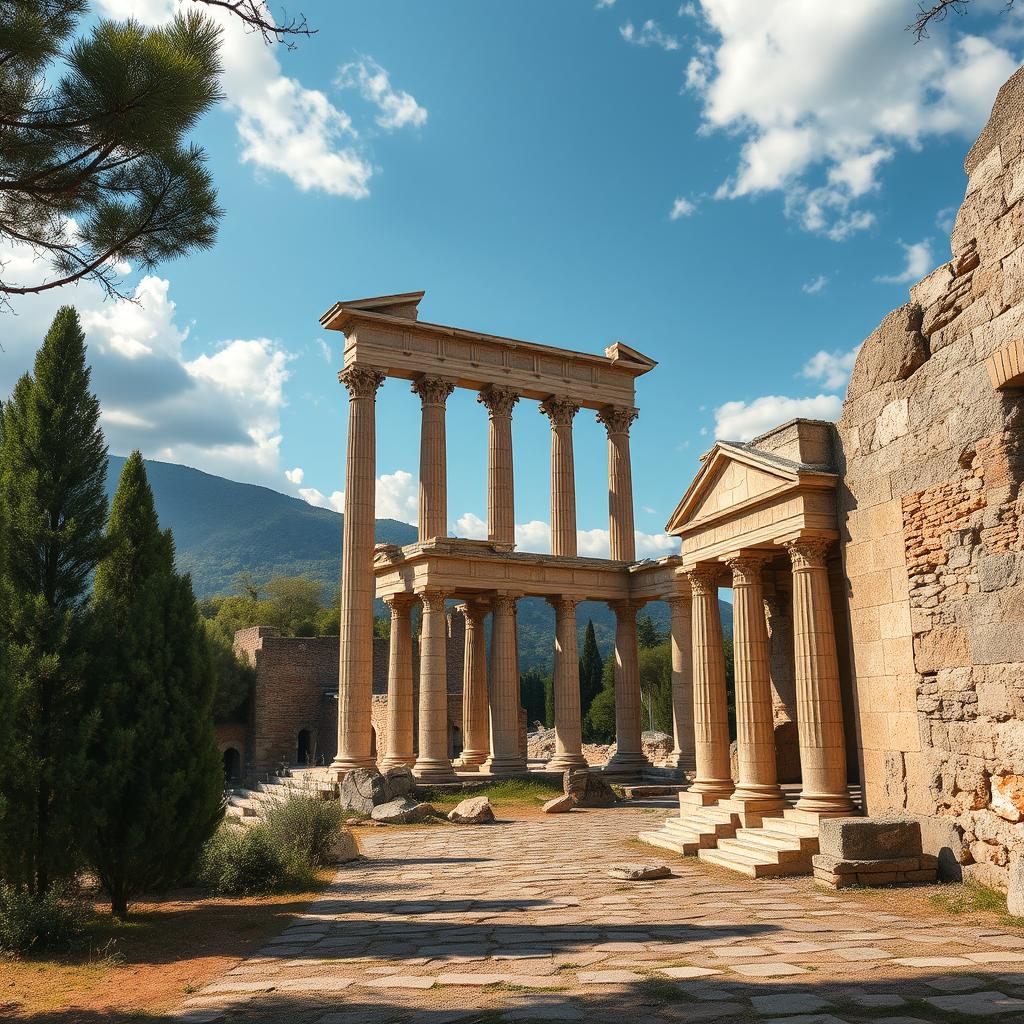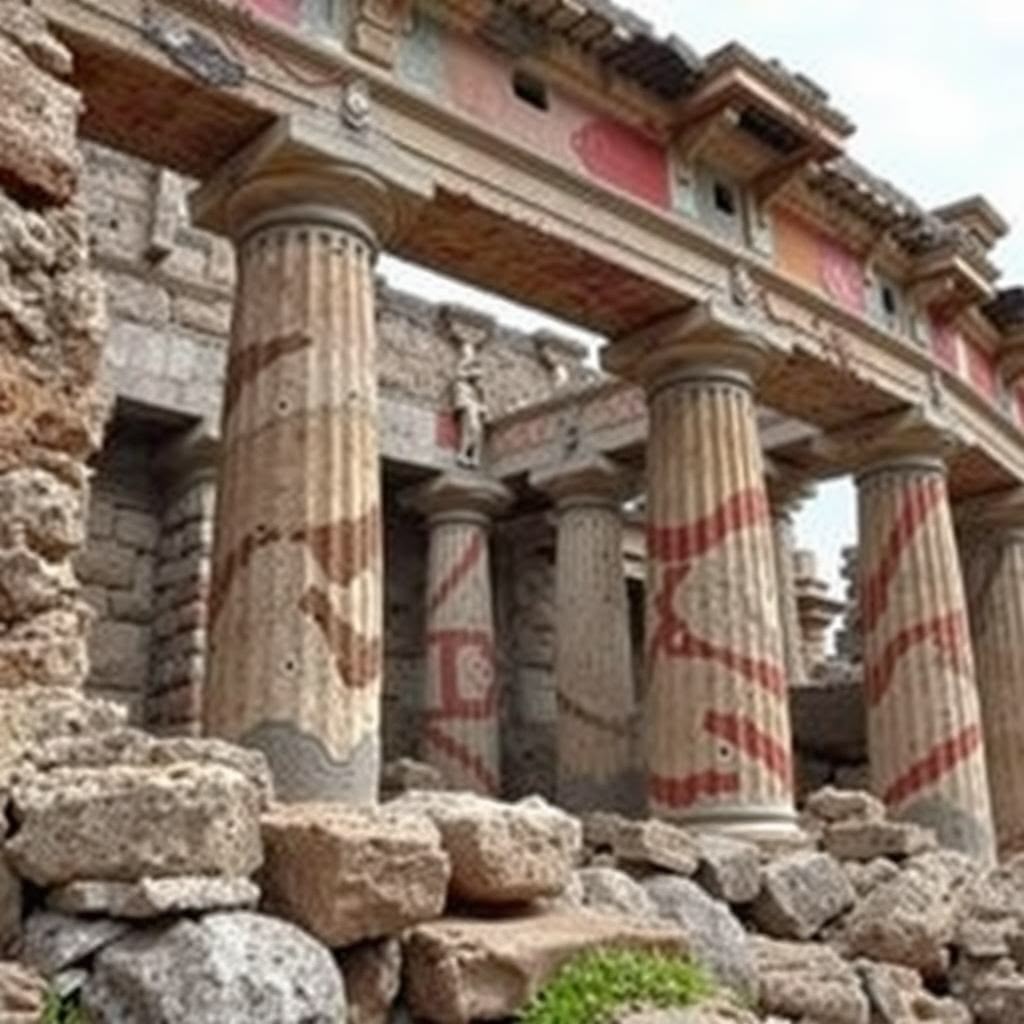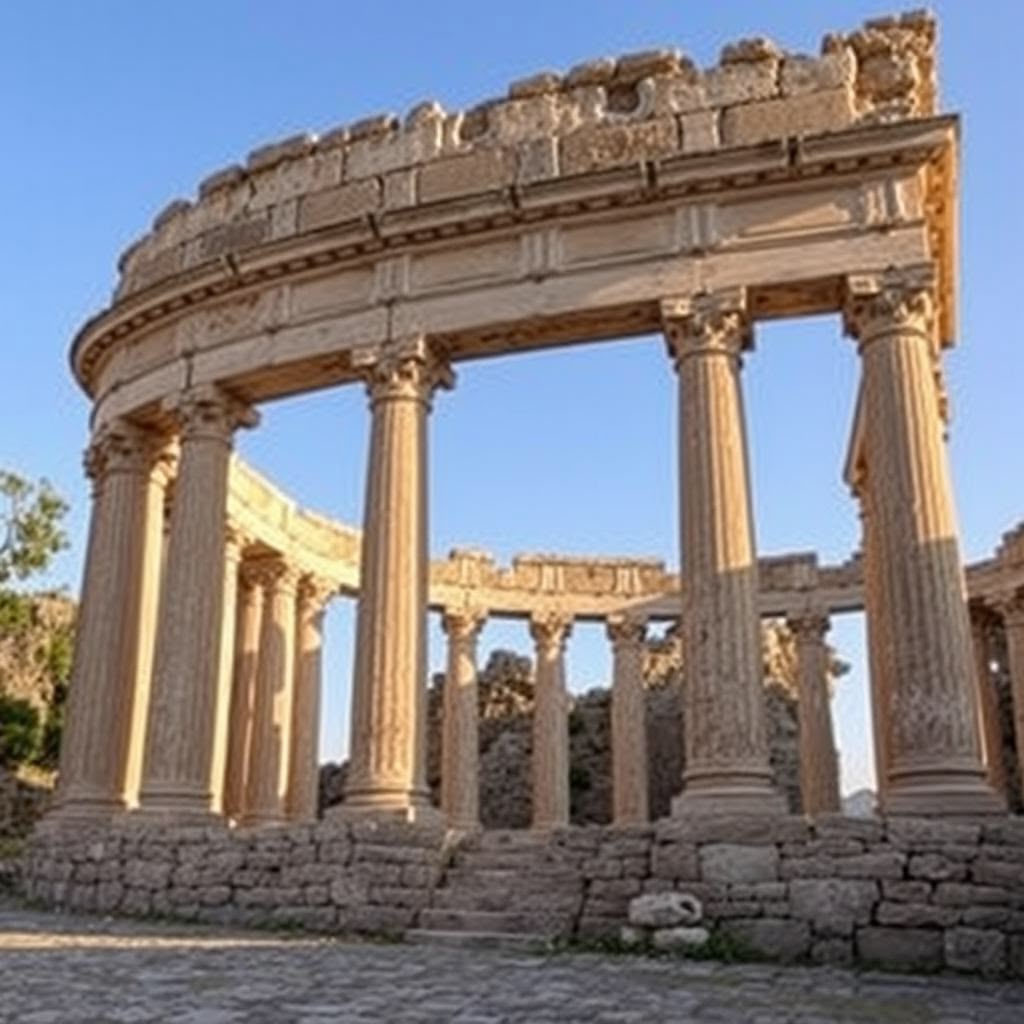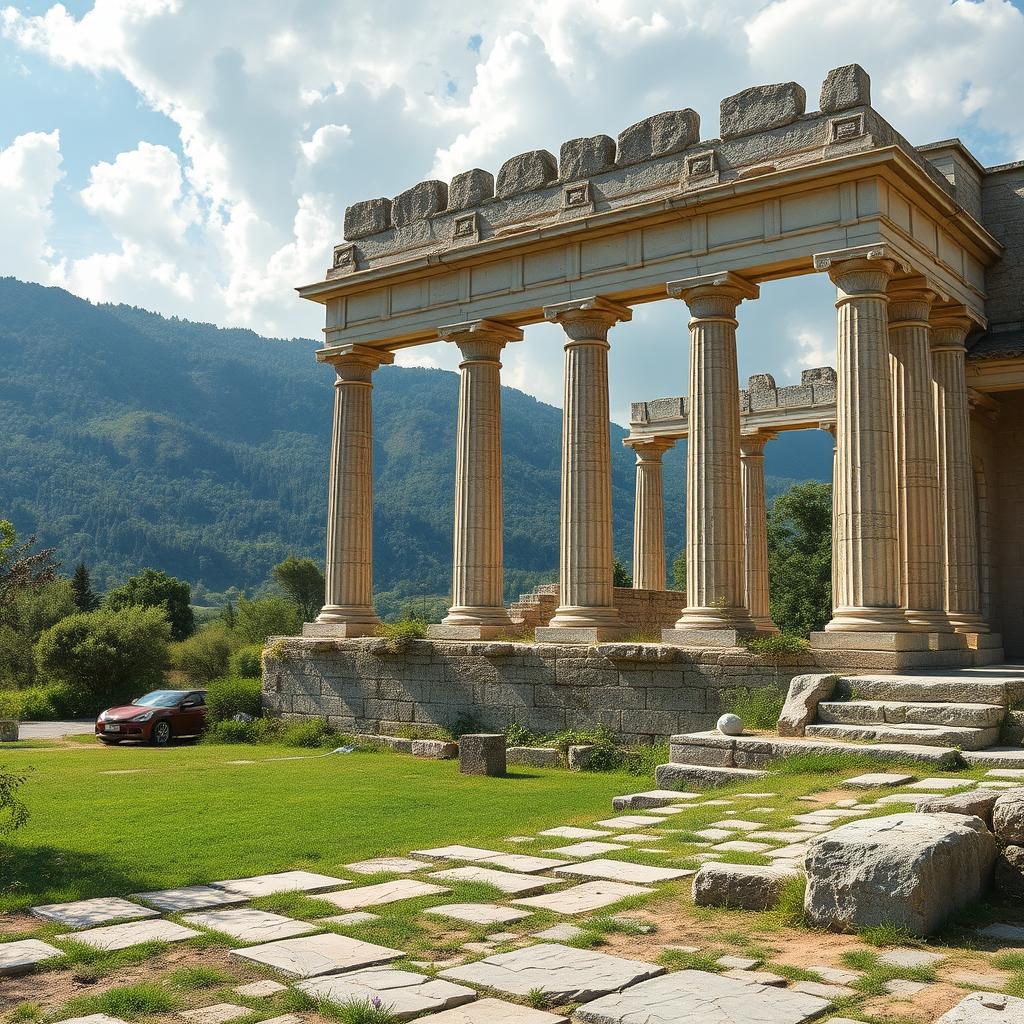The Empire That Built Forever: Rome’s 2,000-Year Construction Legacy
Standing beneath the massive dome of the Pantheon, I couldn’t help but feel a profound sense of humility. This extraordinary structure has stood for nearly two millennia—its concrete dome still perfectly intact, its proportions still mathematically precise, its beauty still breathtaking. What struck me most wasn’t just that it had survived, but that modern architects with all their advanced technology struggle to create buildings that last even a fraction as long.
The Roman Empire’s greatest conquest wasn’t just territory—it was time. While modern skyscrapers and bridges often require major renovations after mere decades, Roman structures have defied centuries of earthquakes, wars, pollution, and neglect. Some are still in daily use after 2,000 years. This remarkable achievement raises an uncomfortable question for today’s architectural profession: Have we actually regressed in our ability to build for posterity?
Professor David Moore, author of “The Roman Pantheon: The Triumph of Concrete,” puts it bluntly: “Modern construction prioritizes speed and cost-efficiency over longevity. Romans built for eternity—we build for quarterly earnings reports.” This fundamental difference in philosophy has produced stark contrasts in durability that would make ancient Roman engineers shake their heads in disbelief at our disposable approach to architecture.
The evidence isn’t just academic. The Architectural Durability Institute estimates that the average modern commercial building is designed for a 50-75 year lifespan, while Roman structures routinely surpass the 2,000-year mark. This disparity represents not just a technical gap but a philosophical one that challenges our very conception of architectural achievement.
Let’s explore five revolutionary Roman engineering techniques that continue to outshine modern methods, revealing how ancient wisdom might hold the solutions to our most pressing architectural challenges.

The Immortal Mix: How Roman Concrete Outperforms Modern Portland Cement
The Colosseum stands partially in ruins—not because its concrete failed, but because humans pillaged its iron clamps and stone facades. The concrete itself remains stubbornly intact, a testament to an engineering marvel modern science has only recently begun to understand. Roman concrete—opus caementicium—has survived 2,000 years of rain, freeze-thaw cycles, saltwater exposure, and seismic activity while modern concrete often shows significant deterioration within decades.
The secret lies in a seemingly magical ingredient: volcanic ash known as pozzolana. When mixed with lime and seawater, it triggers a crystallization process that actually strengthens over centuries—the exact opposite of modern concrete, which begins degrading almost immediately after curing. Marine archaeologist Maria Jackson from the University of California discovered that seawater interacting with this volcanic material creates aluminous tobermorite crystals, a mineral that continues to strengthen the concrete matrix over time.
“Modern concrete is designed to reach maximum strength within a month,” explains Dr. Jackson. “Roman concrete gets stronger over centuries because it’s essentially a living geological material that continues to mineralize and crystallize.” While modern engineers focus on immediate compressive strength, Roman builders understood something we’ve forgotten—that truly durable concrete requires time to develop its full potential.
The environmental implications are staggering. Portland cement production accounts for 8% of global carbon emissions, yet the structures it creates may last less than a century. Roman techniques used significantly lower firing temperatures, reducing energy needs while creating a product that lasts millennia. Geochemist Marie Jackson has spent years trying to reverse-engineer Roman concrete, noting that “if we could replicate this formula, we could revolutionize modern construction sustainability.”
Particularly humbling is the Roman concrete used in marine environments. Modern seawalls and harbors require constant maintenance against the corrosive effects of saltwater. Yet Roman harbor installations at Caesarea, Portus, and Baiae remain functional after two millennia underwater. The Romans didn’t just overcome saltwater corrosion—they harnessed it as a strengthening mechanism.
Recent attempts to recreate Roman concrete have produced promising results, but implementation faces resistance from an industry built around Portland cement standards and quick construction timelines. The irony is stark: our “advanced” materials might be considered primitive by ancient standards when measured by the most important architectural metric—longevity.

The Physics-Defying Arch: Rome’s Structural Revolution That Transformed Architecture
When Roman engineers perfected the arch, they didn’t just create a new design element—they fundamentally transformed what was possible in architecture. The semi-circular arch allowed Romans to span distances that would have required forests of columns using post-and-lintel construction. This innovation quite literally opened up space, creating vast interior volumes that wouldn’t be surpassed until the industrial revolution.
The genius of the Roman arch lies in how it transforms the crushing force of gravity into compressive strength. Each wedge-shaped voussoir stone in an arch transfers load to its neighbors, creating a self-reinforcing system that grows stronger under pressure. This counterintuitive principle—that properly shaped stones could hold each other up rather than collapse—represents one of architecture’s most profound conceptual breakthroughs.
“The Roman arch epitomizes elegant engineering,” notes structural engineer Robert Mark from Princeton University. “They understood that the shape itself distributes forces so efficiently that the structure becomes virtually indestructible when properly constructed.” This insight allowed Romans to build structures of unprecedented scale and complexity, from aqueducts spanning valleys to massive public baths covering acres.
The Pont du Gard aqueduct in southern France demonstrates this principle magnificently. Its three tiers of arches rise 160 feet above the river, supporting a water channel with a gradient of just 1:3,000 over its entire 31-mile length. After 2,000 years, its arches show virtually no deformation or structural compromise despite carrying millions of gallons of water daily for centuries.
Perhaps most impressive was the Romans’ intuitive understanding of arch behavior without the benefit of modern physics. They determined empirically that an arch exerts outward thrust at its base that must be contained, leading to their development of buttresses and precise counterbalancing techniques. They understood that stability came from the entire system working in harmony rather than from the strength of individual components.
While modern engineering has given us spectacular bridges and tunnels, many rely heavily on reinforced concrete and steel—materials with inherently limited lifespans due to corrosion. Roman arches built from properly fitted stone require almost no maintenance and have demonstrated multi-millennial durability. The Arch of Titus, built in 82 CE, continues to stand in Rome with its structural integrity intact, while modern bridges often require complete reconstruction after less than a century.
The implications for sustainability are profound. Roman arches embody a “less is more” philosophy that achieves maximum strength with minimum materials through perfect form—a lesson modern architecture, with its resource-intensive methodologies, would do well to relearn.

Gravity’s Master: How Roman Aqueduct Engineers Achieved Impossible Precision
The Romans constructed over 900 aqueducts throughout their empire, creating water systems of such precision that modern engineers still struggle to comprehend how they achieved such accuracy without modern surveying equipment. The aqueduct network of Rome alone delivered over 300 million gallons of fresh water daily—more per capita than many modern cities provide.
What truly distinguishes Roman aqueducts is their nearly imperceptible gradient. To maintain water flow without excessive velocity that would damage the structures, Roman engineers maintained slopes of just 1:4,000 in some sections—equivalent to a drop of only 1.5 inches per 50 feet. This level of precision seems impossible without laser levels and GPS, yet they achieved it using simple tools: weighted strings, water-filled troughs, and bronze surveying devices called gromae.
“The precision achieved in Roman aqueduct gradients reveals a mastery of practical mathematics that we tend to underestimate,” explains archaeological engineer Daniel Rothman. “They weren’t just following formulas—they understood the physical principles of fluid dynamics through careful observation and intergenerational knowledge transfer.”
The Pont du Gard aqueduct maintained this gentle gradient over 31 miles of varied terrain, requiring not just precise measurement but comprehensive landscape understanding. Engineers had to account for thermal expansion, ground settling, and water pressure variations—all without modern computational tools. They did this by incorporating flexibility into seemingly rigid structures and by prioritizing maintenance accessibility throughout the design.
Even more impressive was their hydraulic engineering. Romans created settling tanks to remove sediment, distribution terminals to manage water pressure, and sophisticated siphon systems to cross deep valleys. The siphons used lead pipes to push water uphill after descending from higher elevations, requiring precise calculations of pressure and flow resistance.
Archaeologist Trevor Hodge notes that “Roman hydraulic engineers intuitively understood principles that wouldn’t be formally codified until the Renaissance.” Their water systems included precisely calibrated distribution tanks that automatically allocated specific water volumes to different neighborhoods based on need and civic importance—essentially an ancient analog computer managing resource distribution.
Modern water infrastructure, despite our advanced materials and computerized management systems, often suffers from significant inefficiencies. The American Society of Civil Engineers estimates that leaking pipes waste over 2 trillion gallons of treated water annually in the United States alone. Meanwhile, many Roman aqueducts maintained near-perfect water delivery for centuries with minimal water loss.
The lesson for modern architects isn’t just technical but philosophical: precision matters more than complexity, and systems designed with maintenance in mind will inevitably outperform those optimized solely for initial construction efficiency.

The Invisible Furnace: Rome’s Revolutionary Hypocaust Heating System
Long before central heating became commonplace, Romans had developed a sophisticated underfloor heating system called the hypocaust that maintained comfortable temperatures throughout massive public baths and private villas, even in the coldest regions of their empire. This engineering marvel distributed heat more efficiently than many modern systems, yet used remarkably simple principles.
The hypocaust created a hollow space beneath floors and within walls where hot air from a furnace (praefurnium) circulated before escaping through terracotta chimneys embedded in walls. The genius lay in how this system created convection currents that distributed heat evenly throughout structures, eliminating cold spots and maintaining consistent temperatures with minimal fuel consumption.
“The Roman hypocaust represents one of history’s most elegant thermal engineering solutions,” observes Dr. Eleanor Reeves, a specialist in historical building systems. “They created an integrated approach to heating that treated the entire building as a thermal system rather than focusing on point sources of heat.” This holistic approach is something modern architects have only recently begun to reconsider as we move toward more sustainable building practices.
Archaeological evidence from Roman baths in Britain shows that these systems could maintain temperatures of 90-100°F throughout massive complexes even during harsh winters, using remarkably little fuel. The sophisticated design included hollow bricks (tubuli) in walls that created a chimney effect, terracotta spacers (pilae) that supported suspended floors while allowing heat flow, and strategically placed vents that could be adjusted to control temperature in different rooms.
What makes this achievement particularly impressive is that Romans accomplished this precise thermal regulation without temperature gauges, computer modeling, or thermostat controls. Instead, skilled attendants monitored the system based on experience and tactile feedback, adjusting fuel and airflow to maintain optimal conditions. This human-centric approach to environmental control stands in stark contrast to our often over-engineered modern systems that frequently fail due to electronic or mechanical complexity.
The environmental efficiency of the hypocaust system also deserves recognition. Studies of reconstructed Roman baths suggest they used approximately 20-30% less fuel than would be required to heat equivalent spaces with modern forced-air systems. This efficiency came from the thermal mass of the structure itself, which stored and gradually released heat, creating a self-regulating effect that modern buildings often lack.
Contemporary “radiant floor heating” systems, considered cutting-edge in sustainable architecture, are essentially rediscoveries of Roman principles. Yet few modern implementations achieve the durability and maintenance simplicity of their ancient counterparts. While today’s systems rely on vulnerable plastic tubing and electronic controls with limited lifespans, Roman hypocausts functioned effectively for centuries with only basic maintenance.

The Eternal Roads: How Roman Highway Engineering Outlasted the Automobile
The phrase “all roads lead to Rome” reflects a literal truth—the Romans built over 250,000 miles of paved roads connecting their vast empire, creating the world’s first integrated transportation network. What’s truly remarkable isn’t just the scale of this achievement but its durability. Many Roman roads remain in use today after 2,000 years of continuous traffic, while modern highways often require complete reconstruction after just 20-30 years.
The secret to this extraordinary longevity lies in the sophisticated multi-layered construction method Romans developed. Unlike modern roads that often consist of just two or three layers, Roman highways typically featured five distinct strata, each serving a specific engineering purpose. This comprehensive approach addressed drainage, frost heave, soil settlement, and wear resistance in an integrated design.
“Roman road builders understood something fundamental that we often overlook,” explains transportation historian Diana Foster. “They recognized that a road’s longevity depends more on what you can’t see—the foundation and drainage systems—than on the surface material itself.” This insight led Romans to invest up to 80% of construction resources in the subsurface layers, creating a stable foundation that could withstand centuries of use.
The typical Roman road began with a trench excavated to solid ground, sometimes several feet deep. This was filled with a layer of rubble (statumen) for drainage, followed by a layer of crushed stone and lime (rudus) that created a stable base. Next came a layer of concrete or compacted sand (nucleus), topped with a precisely fitted surface of polygonal stone pavers (summum dorsum) set in mortar. The entire structure was crowned in the center and flanked by drainage ditches, ensuring water flowed away rather than penetrating the roadbed.
This sophisticated design addressed the primary enemy of all road structures: water infiltration. By creating multiple drainage pathways and water-resistant layers, Roman roads effectively managed moisture movement through the structure. Modern highways, despite advanced materials, often fail prematurely because water penetrates through cracks, freezes, expands, and ultimately destroys the road’s structural integrity.
Archaeological excavations of Roman roads have revealed another remarkable feature: built-in maintenance access. At regular intervals, Romans incorporated service points where drainage systems could be inspected and cleared—evidence of long-term planning largely absent in contemporary infrastructure. They understood that even the best-designed systems require maintenance and built this requirement into the original construction.
The environmental implications are profound. The continuous cycle of road construction, deterioration, and reconstruction that characterizes modern highway systems generates enormous carbon emissions and consumes vast material resources. The World Economic Forum estimates that road construction and maintenance account for approximately 2% of global carbon emissions annually. Roman approaches to road building, with their emphasis on permanence rather than expedience, offer sustainable alternatives that merit serious reconsideration.
Reclaiming Ancient Wisdom: The Future of Architecture May Lie in Its Past
As we’ve explored these five remarkable Roman engineering achievements, a common thread emerges—Roman builders designed for perpetuity while we design for planned obsolescence. This fundamental philosophical difference explains why structures built two millennia ago continue to outperform their modern counterparts in the most important architectural measure: longevity.
The Romans’ greatest insight wasn’t technical but conceptual. They understood that truly sustainable architecture must transcend individual lifetimes to serve generations yet unborn. This perspective led them to prioritize materials that improve with age, systems simple enough to be maintained indefinitely, and designs that accommodate natural forces rather than fighting against them.
“The most sustainable building is the one that never needs to be rebuilt,” notes architectural historian Vincent Scully. This self-evident truth seems to have been forgotten in our era of disposable construction, where buildings are often demolished and replaced after just a few decades. The embodied energy and resources in this constant cycle of construction and destruction represent one of our most significant yet least addressed environmental challenges.
Fortunately, a growing movement within architecture and engineering is rediscovering Roman wisdom. Researchers at MIT have developed self-healing concrete inspired by Roman formulations. Engineers in Europe are revisiting passive cooling and heating systems based on hypocaust principles. Urban planners are rethinking infrastructure with multi-century timeframes rather than decades.
This renaissance of ancient wisdom doesn’t require abandoning modern technology—rather, it means applying our advanced understanding to achieve the durability Romans accomplished through empirical knowledge. By combining modern materials science with Roman engineering philosophy, we might create structures that surpass even what the ancients achieved while dramatically reducing architecture’s environmental footprint.
The next time you visit a Roman structure—whether the Pantheon with its mathematically perfect dome, an aqueduct still standing tall across a valley, or simply a Roman road still carrying traffic after two millennia—consider this humbling truth: Our architectural ancestors weren’t just building for their time but for ours as well. The question we must ask ourselves is whether our own architectural legacy will demonstrate similar foresight and generosity toward the future.
Perhaps the most valuable lesson Rome offers modern architects isn’t a specific technique but a mindset—one that measures success not in years but in centuries, that values maintenance over replacement, and that sees buildings not as temporary commodities but as permanent contributions to human civilization. In reclaiming this perspective, we might once again create architecture worthy of the ages.

